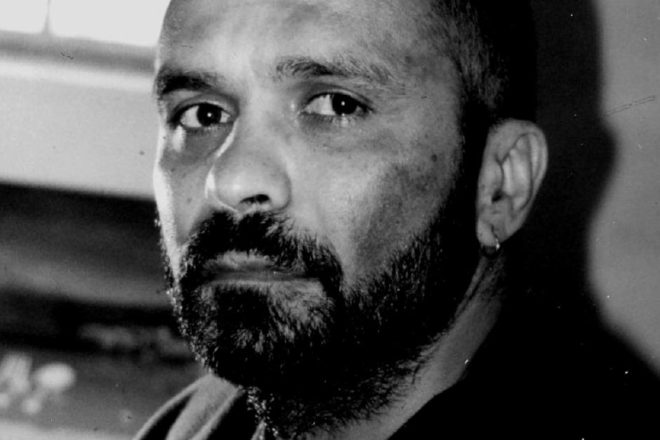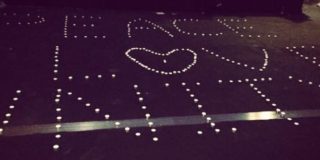35 years in jail for a crime he has continuously asserted he did not commit.
A case marred by inaccurate and misleading forensic evidence.
Has served beyond the original non-parole period of 32 year sentence for his conviction.
Is prepared to die in jail rather than submit to a false accusation.
BROMLEY WANTS HIS NAME CLEARED.
Australia’s indigenous people are incarcerated at a rate nine times higher than their numbers in the population. Nationally, 27% of prisoners are held for convictions[i] ranging from the inability to pay outstanding fines [ii] to more serious matters including murder. Historically, non-indigenous Australians have failed to recognize the bias that may influence decisions regarding culpability of indigenous people. Research conducted since 2015 demonstrates that along with the disproportionate rates of incarceration for indigenous versus non-indigenous Australians, there is also a disproportionate rate of wrongful convictions, with 15% attributable to indigenous Australians between 1922 and 2015.[iii] [iv]
Dioso-Villa notes multiple factors work together to disadvantage an accused including inaccurate forensics, questionable eyewitness testimony, race/ethnicity, tunnel vision on the part of the investigating police and prosecutors, and prior convictions. Both Bromley and Karpany had a prior convictions and Bromley had been released the same day Docoza is believed to have died.
In the case put to the jury in 1985, prosecutors were told that Gary Carter was an eye-witness to an assault that led to the charge of murder against Bromley and his co-accused John Karpany, both indigenous Australians. In Carter’s testimony, he stated that Docoza was the victim of sexual advances by Karpany and Bromley and that refusal lead to aggression. Carter said that when he left Docoza’s body was naked.
Carter suffered from schizoaffective disorder (not simply schizophrenia as stated in some earlier sources. Schizoaffective disorder includes an aspect of mood disorder that is intractable) and was psychotic at the time of the events recounted to the jury. The jury were made aware of his illness at the time, but were told that his testimony was reliable. This despite that fact that he was admitted to a psychiatric hospital the day after the presumed death of Docoza and that the body pulled from the river was fully clothed.
A second witness, a cab driver, testified that he dropped Carter, Karpany, Bromley and Docoza off in the Adelaide nightlife. Both witnesses testified that Bromley was wearing an entirely white suit and tie as well as a distinctive white hat, making a quite dapper impression for the newly released prisoner. In the night life of Adelaide, one can imagine that the man clad in such a flashy outfit would have stood out like a neon light.
Contrasting with Carter’s testimony and that of the cab driver is the recollection of a prisoner welfare volunteer, Andrew Lieschke, who drove Bromley into town on the night in question but left before things went awry. He remembers Bromley as wearing jeans and some form of casual shirt, perhaps a T-shirt, but certainly not a white suit or hat. Lieschke was not called to give evidence by either the prosecution or defence and no proof that Bromley owned such a spiffing outfit claimed by the prosecution witnesses was ever put to the jury.[v]
The Chief Forensic Pathologist of the Institute of Medical and Veterinary Science (IMVS), Dr. Colin Manock, was a crucial witness. Appointed in 1968, Manock had provided evidence in around 10,ooo cases before his tenure ended in 1995; testimony was given in around 400. Manock was admitted to the College of Pathologists of Australia in 1971 without the usual rigorous written and oral examinations and without any similar qualifications from his country of birth (the United Kingdom), a courtesy afforded him by virtue of his already senior position at the IMVS.[vi] His role was as a forensic expert providing evidence on the causes of death in cases in the state. In the case of the body of Docoza which had been in the river for five days by the time it was found, Manock testified that the body showed signs of bruising that he expertly testified were incurred within 24 hours of death, that the deceased was still alive but unconscious when he entered the water and that the final cause of death was drowning.[vii] Subsequent forensic pathologists have testified that such assertions regarding a body that had been immersed in the river for so long decomposing could simply not have been made with any degree of confidence and that such injuries may have been incurred post mortem. In fact, Manock himself said in 2008:
“Obviously if a body is pulled from the water after a week then you’re not going to see the signs of drowning.”[viii]
John Karpany was released on parole in 2004 after accepting that the material put to the jury made an overwhelming case for his conviction. Bromley continues to refuse to the do the same and his co-convicted has stated after release that neither Bromley nor he are guilty.
Bromley appealed his conviction in 1986 in the High Court of Australia to no avail. At the time his avenues for redress had reached a dead-end. However, in 2013 new laws in South Australia were passed that enabled a convicted person to make a second appeal provided that compelling new evidence could be presented to the court.[ix]
In March 2016, Bromley’s lawyers applied to the Supreme Court seeking permission to appeal the conviction in the South Australia Criminal Court of Appeal based upon fresh and compelling evidence related to the prime witnesses Carter and Manock. The decision was handed down in the Criminal Court of Appeal in May 2018, the court disallowing Bromley’s request, despite the testimony of expert witnesses calling into question Manock’s findings and modern understandings of the likely effect of schizoaffective disorder on Carter’s memory. However, as part of the hearing the court permitted the prosecution to raise Bromley’s prior conviction, despite the fact that it had not formed part of the original trial in 1985. This is a departure from the usual Court of Appeal process and to the knowledge of Bromley’s legal team is the first time it has been known to happen in Australia or the UK. It is this point that raises the greatest concern.
The question must be asked – has the South Australia Criminal Court of Appeal become not only a review body, but also that of a retrial court? Answer to this question will have long standing impacts for all victims with questionable convictions and will fundamentally change the appeals process.
Derek Bromley’s legal team intends to appeal to the High Court. It is hoped that the application will be accepted not only because Bromley deserves an unbiased review of the new evidence his lawyers have at hand, but also as the role of the Criminal Court of Appeal needs to be clarified for those seeking review under similar circumstances.
Blak and Black acknowledges the detailed information at Networked Knowledge without whom this article would not have been possible.
[i] Roach K, The Wrongful Conviction of Indigenous People in Australia and Canada. Flinders Law Journal, 2015(7).
[ii] Briefing Paper: Imprisonment of Fine Defaulters. Law Society of Western Australia, December 2016.
[iii] Dioso-Villa R, A Repository of Wrongful Convictions in Australia: First Steps Toward Estimating Prevalence and Causal Contributing Factors.
[iv] Roach K, The Wrongful Conviction of Indigenous People in Australia and Canada. Flinders Law Journal, 2015(7).
[v] Bromley: Part Two. Today Tonight, 20 November 2012.
[vi] Four Corners: “Expert Witness”. ABC, October 2001.
[vii] R v Bromley. Supreme Court of Australia, Criminal Court of Appeal. 29 May 2018.
[viii] Bromley: Part Two. Today Tonight, 20 November 2012.
[ix] Moles RN, Networked Knowledge Media Briefing. Networked Knowledge, 2018.




This is an important issue addressing what is certainly the most disastrous case for the criminal justice system in Australia’s legal history. Never before in Australia (or the UK for that matter) has a person had a conviction overturned after being imprisoned for 35 years.
The failure in this case is not only that the jury were seriously misinformed at the time of the trial by the now acknowledged unqualified witness who had fraudulently presented himself as an expert, but also as to the state of mind of the so-called ‘eye-witness’. Such a comprehensive failure should without doubt ensure that the conviction was overturned. Yet the Court of Criminal Appeal went to unprecedented lengths to excuse these shortcomings and to allow the prosecution to re-open its case on the appeal. As the article points out this has never been done before in Australia or the UK. That it should be done now on this particular appeal is quite contrary to the legal rulings by two of the judges on this appeal in their earlier rulings in the Keogh and Drummond appeals.
There is no doubt that this case will ultimately have to be the subject of a Royal Commission. In the meantime, we will await the judgment of the High Court of Australia, in the sure and certain hope that they will have the confidence and ability to explain the law correctly and put right this most manifest miscarriage of justice.
The fact that he is still imprisoned way past his parole date is wrong. He should of been given his freedom by now whether he is guilty or not. I believe the unreliable evidence is clear enough to prove he should never have been accused and convicted in the first place. It is his human right to refuse to admit guilt after all this time. It should not be the grounds on keeping him in prison. Especially considering that he has fought SA fires through a prison work team. He has saved people’s lives for heavens sake.